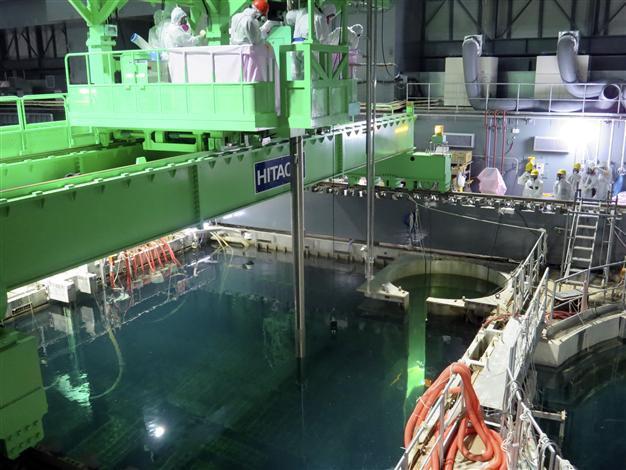Japan researchers use cosmic rays to see nuclear fuel
TOKYO - Agence France-Presse

In this Nov. 18, 2013 file photo released by Tokyo Electric Power Co. (TEPCO), workers try to remove radioactive fuel rods. AP Photo
Japanese researchers said Thursday they had succeeded in using cosmic rays to find nuclear fuel inside a reactor, a technology that might be helpful in the complicated decommissioning at Fukushima.
By observing the way the particles behaved near reactors, container vessels and spent fuel pools, they were able to obtain a clear visual picture of the fuel, they said.
"We are conducting this study carefully as this enables you to find where nuclear fuel is anywhere in the world," said Fumihiko Takasaki, a researcher at the High Energy Accelerator Research Organisation, or KEK, one of the laboratories involved in the research.
The technology could help Tokyo Electric Power Co. in the clean-up at its Fukushima Daiichi power plant, he told AFP by telephone.
A massive earthquake and subsequent tsunami knocked out cooling systems at the power station, sparking reactor meltdowns that contaminated land, air and the sea.
Engineers working on the decades-long decommissioning are faced with a series of difficulties, not least of which is that they do not know exactly where the molten fuel is inside the battered reactors.
Present technology is not robust enough to allow them to get a look inside the units, where some fear that fuel has melted through containment vessels and possibly into the ground underneath.
KEK, working jointly with University of Tokyo, University of Tsukuba and Tokyo Metropolitan University, observed particles called muons in experiments.
Muons are constantly falling on the earth and move without hindrance through water, human bodies and many other objects.
But substances with high density such as nuclear fuel reduce their penetration. A team of researchers monitored muons at three locations outside an off-line nuclear plant in Ibaraki prefecture, east of Tokyo, from February 2012 to December 2013.
They tracked where muon penetration was blocked to produce the image of nuclear fuel at the plant.
Takasaki said the team would propose use of the system to Tokyo Electric Power, adding observations at some five locations for less than two months would enable them to produce visual images of nuclear fuel at Fukushima.
